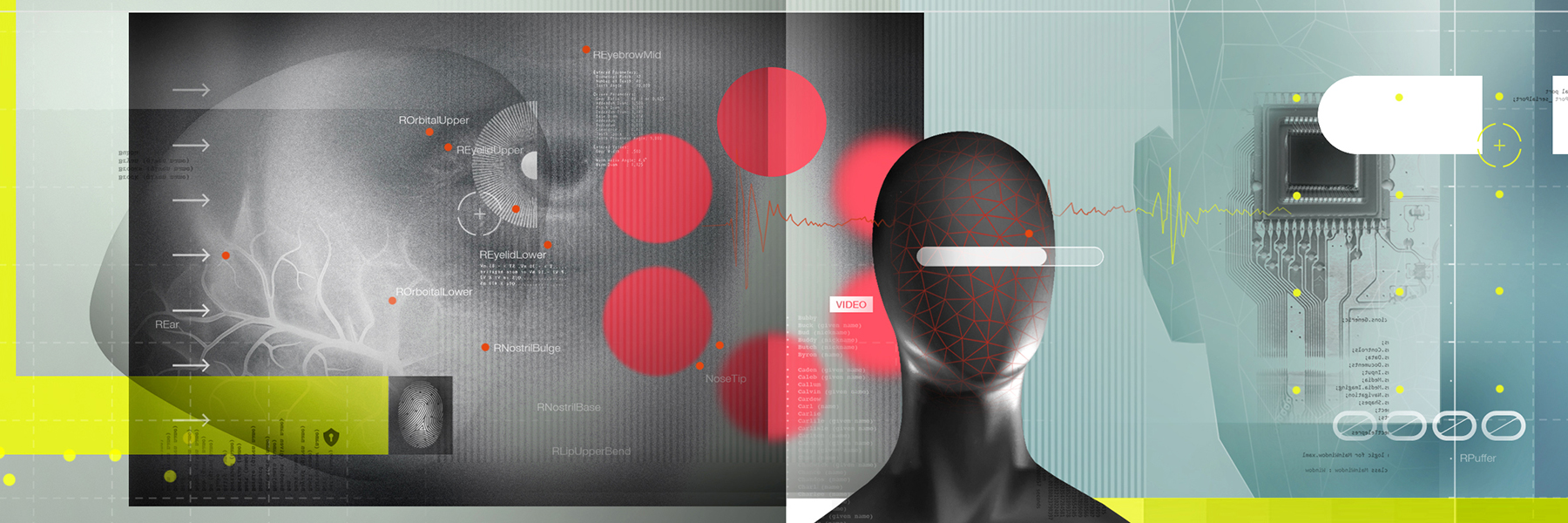Will Switzerland distance itself from the EU on mass surveillance?

Negotiations between Switzerland and the European Union (EU) came to a standstill just as Brussels was working to regulate artificial intelligence-based mass surveillance. That leaves questions over the future of privacy laws in Switzerland, where voters just approved one of the strictest anti-terrorism laws in Europe.
At the end of May, the Swiss government scuttled its framework agreement with the EU after seven years of negotiations. Bilateral relations with Brussels had reached an all-time low. A few weeks later, on June 13, the Swiss people voted clearly in favour of the Federal Act on Combating Terrorism, which gives the police greater powers to intervene on a preventive basis.
The break with the EU comes at a crucial moment in Europe’s efforts to combat the use of population surveillance technology not only by private companies, but also by police forces. The European Commission is currently working on the world’s first legislation to regulate artificial intelligence (AI). The proposal currently under discussion addresses the risks of this technology and defines clear obligations regarding its specific uses.
In Brussels’ crosshairs are biometric identification systems (facial recognition being one of them), which are becoming increasingly popular in public spaces – often without the knowledge of the public – for surveillance, data collection and law enforcement purposes.
Earlier this year, Amnesty International launched a campaign against the use of facial recognition technologies for identification purposes by both state agencies and private sector actors. According to the NGO, “facial recognition risks being weaponised by law enforcement against marginalised communities around the world”. Amnesty also spoke out against the new Swiss law on police measures to combat terrorism, considering it “dangerously vague” and a “threat to the future”. Since the law contributes to more surveillance, it could indirectly increase the use of facial recognition technologies that Brussels is looking to ban, say observers.
“In the liberal-democratic European context, the Swiss law is certainly one of the most extreme, as it grants unprecedented power in some cases to the federal police,” said Lukas Hafner, Amnesty Switzerland’s campaign coordinator in the area of technology and human rights. Last year, the Council of Europe also voiced its concerns about significant human and fundamental rights violations that the law would allow.
Where does the electronic eye of the law look?
Although the Swiss Anti-Terrorism Act doesn’t expressly mention camera surveillance, it empowers the federal police (fedpol) to order “electronic surveillance of a potential terrorist”, such as with an electronic bracelet (Art. 23q). More controversial is the fact that electronic surveillance measures are decided by fedpol without the agreement of a court and that the data collected can be used for a purpose beyond that provided for by law, highlights Frédéric Bernard, a professor of public law at the University of Geneva. “This law doesn’t prevent much, that’s the problem,” he says.
Fedpol told SWI swissinfo.ch that it does not use facial recognition systems and denied any link between the preventive measures written into the new law and the use of such technologies.
But some cantonal police forces already implement biometric systems to investigate offences in criminal proceedings. The St Gallen police, for example, use a Swedish investigation software, the Griffeye Analyze DI Pro, which analyses large amounts of data using AI and facial recognition. The website of the manufacturer, Griffeye Technologies, states that the software can relate “metadata to open sources on the Internet” and identify faces using large volumes of “real-world images”.
Globally, at least four billion people have a profile on the Web from which such “real-world images” could be drawn. Studies such as the one conducted by the MIT Media Lab’s researcher Joy Buolamwini and the former AI Ethics researcher at Google Timnit Gebru show that AI commercial software is less accurate in facial analysis of dark-skinned people and women.
Hanspeter Krüsi, head of communications for the St Gallen police, specified by e-mail that the material collected “would be compared by the system with images in the police databases to look for matches”. The final checks would then be carried out by a live person.
“Each canton must decide for itself whether it wants to use this technology wisely and whether it has the necessary legal basis to do so,” fedpol wrote to SWI swissinfo.ch. But in the absence of clear laws defining the framework for applying the technologies, who can decide what is wise and what is not?
“There is a risk of arbitrariness and abuse that cannot be overlooked, especially because of imprecisely formulated concepts,” Jean-Philippe Walter, Swiss Data Protection Commissioner at the Council of Europe, tells SWI swissinfo.ch.
The new documentary Coded Bias investigates algorithmic biases and flaws in facial recognition technology that were discovered by MIT researcher Joy Buolamwini:
All eyes on Switzerland
Amnesty International has recently had an eye on the fundamental rights situation in Switzerland, not least because of the risk of further indiscriminate surveillance of the population.
“The Swiss counter-terrorism law will clearly lead to more surveillance of more people since the federal police wants to identify ‘potential terrorists’ before they commit any crime. It is plausible that biometric technologies could be used in this context,” says Amnesty’s Lukas Hafner. He warns that such use could have a disproportionate impact on people who are already marginalised and discriminated against.
He notes that the police, as part of their preventive surveillance, could, for example, decide to install cameras outside meeting spaces of potential suspects, such as a mosque already in their focus.
“These systems pose problems not only in terms of the right to equality and non-discrimination, but also in terms of freedom of expression and assembly, as well as the right to privacy,” Hafner says. The text of the Swiss Anti-Terrorism Act states that “religious and philosophical opinions and activities” can be subject to surveillance and justify the processing of very sensitive personal data (Art. 23h). And legal expert Frédéric Bernard believes that since the definition of terrorism in the law is very broad, the legislation could be applied beyond its original scope.
No rules, no rights
In some countries, such as the United States and China, facial recognition is systematically used for public order purposes and, in the case of China, even to classify social behaviour. In Europe, Belgium and Luxembourg are two of the three countries in the world where the use of biometric identification technologies is prohibited. The third is Morocco.
Through its proposed AI law, the European Commission wants to prohibit the gathering of biometric identification in public spaces in all EU member states and punish those who do not comply with the rules.
Although it has a data protection law, some of which is compliant with the European Union’s GDPR privacy legislation, Switzerland does not have anything comparable to the proposed European technology legislation. “That’s why it should sit back down at the table with the EU and help steer the debate on the governance of new technologies as soon as possible,” Ricardo Chavarriaga tells SWI swissinfo.ch. He heads the Swiss office of CLAIRE – the Confederation of Laboratories for Artificial Intelligence Research in Europe.
A new standard?
The European Commission’s proposed law does allow for the use of facial recognition in the case of “serious crimes”, mainly associated with terrorism. But Chavarriaga and other experts say it marks a significant breakthrough in privacy legislation and is destined to become a standard in the high-tech sector.
For that reason, Chavarriaga believes the costs for Switzerland of a delayed or nonexistent alignment with European law would be very high. The AI expert fears not only for the competitiveness of Swiss technology products on the global market but also for human rights.
“Some areas of application of high-risk technologies, such as those used by the police to enforce the law, could have detrimental effects on the population,” he says. “Police forces are just the last link in the chain: the systems they use are produced by companies that promise them savings and efficiency, often without providing any real guarantees.”
No one would buy a lift without a safety certificate, or a watch that doesn’t work, he points out, adding that requirements should be proportional to risks. Why should it be any different for AI systems, especially when fundamental rights are at stake?

In compliance with the JTI standards
More: SWI swissinfo.ch certified by the Journalism Trust Initiative












You can find an overview of ongoing debates with our journalists here . Please join us!
If you want to start a conversation about a topic raised in this article or want to report factual errors, email us at english@swissinfo.ch.